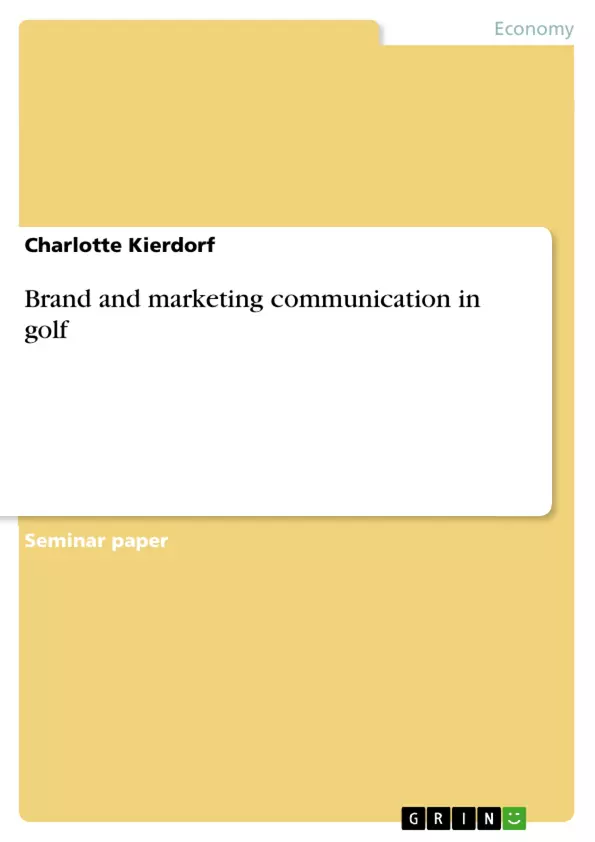1. Introduction
2. Theoretical basics
-What is ‚marketing communication‘?
-What are the objectives of it?
-How does ‚marketing communication‘ work?
-What is a brand? What is ‚brand equity‘?
3. Practical part
-Why is the golf market an attractive communication platform?
-Which elements of brand and marketing communication could a company use in golf?
-Example of the company/ brand ‘NIKE Golf’
4. Conclusion
Objectives
-Learn about key aspects of brand and marketing communication in general and in golf
-Adopt the theoretical knowledge in golf using the example of NIKE
Inhaltsverzeichnis (Table of Contents)
- Introduction
- Currently relevance and background/ problem discussion
- Scope and objectives of the thesis/ methodology
- Theoretical basics
- Definition and delimitation of marketing communication
- Elements and use of marketing communication/ communication mix
- Marketing communication strategies
- Effects and objectives of marketing communication
- Definition of brands and 'brand equity'
- Practical part
- The attractiveness of golf for brands
- Elements of brand and marketing communication in golf
- Reasons and objectives for marketing communication in golf for brands
- Example of Nike's brand and marketing communication strategy in golf
- Findings and conclusion
- Brief summary
- Discussion and critical reflection
Zielsetzung und Themenschwerpunkte (Objectives and Key Themes)
This thesis aims to explore the possibilities for companies to effectively communicate with golfers as a target audience. It analyzes the changing consumer market and the importance of brand and marketing communication for companies seeking to build customer relationships and stand out in a competitive environment. The thesis examines the theoretical foundations of brand and marketing communication, specifically focusing on the use of these tools in the golf market.
- The evolution of the consumer market and the need for targeted marketing communication
- The theoretical framework of brand and marketing communication
- The attractiveness of the golf market for brands
- Examples of successful brand and marketing communication strategies in golf
Zusammenfassung der Kapitel (Chapter Summaries)
The Introduction chapter provides context for the thesis by discussing the changing consumer market and the need for targeted marketing communication in response to the shift towards a fragmented market. It also introduces the importance of brand and marketing communication in achieving business objectives.
The Theoretical basics chapter provides a comprehensive overview of the key concepts and definitions related to marketing communication, exploring the elements and use of the communication mix, and examining the strategic role of marketing communication in achieving desired outcomes.
Schlüsselwörter (Keywords)
The key terms and concepts explored in this thesis include brand and marketing communication, consumer market, target audience, golf market, brand equity, communication mix, advertising, direct marketing, personal selling, public relations, sales promotion, and sponsorship.
- Quote paper
- Charlotte Kierdorf (Author), 2012, Brand and marketing communication in golf, Munich, GRIN Verlag, https://www.grin.com/document/205624



